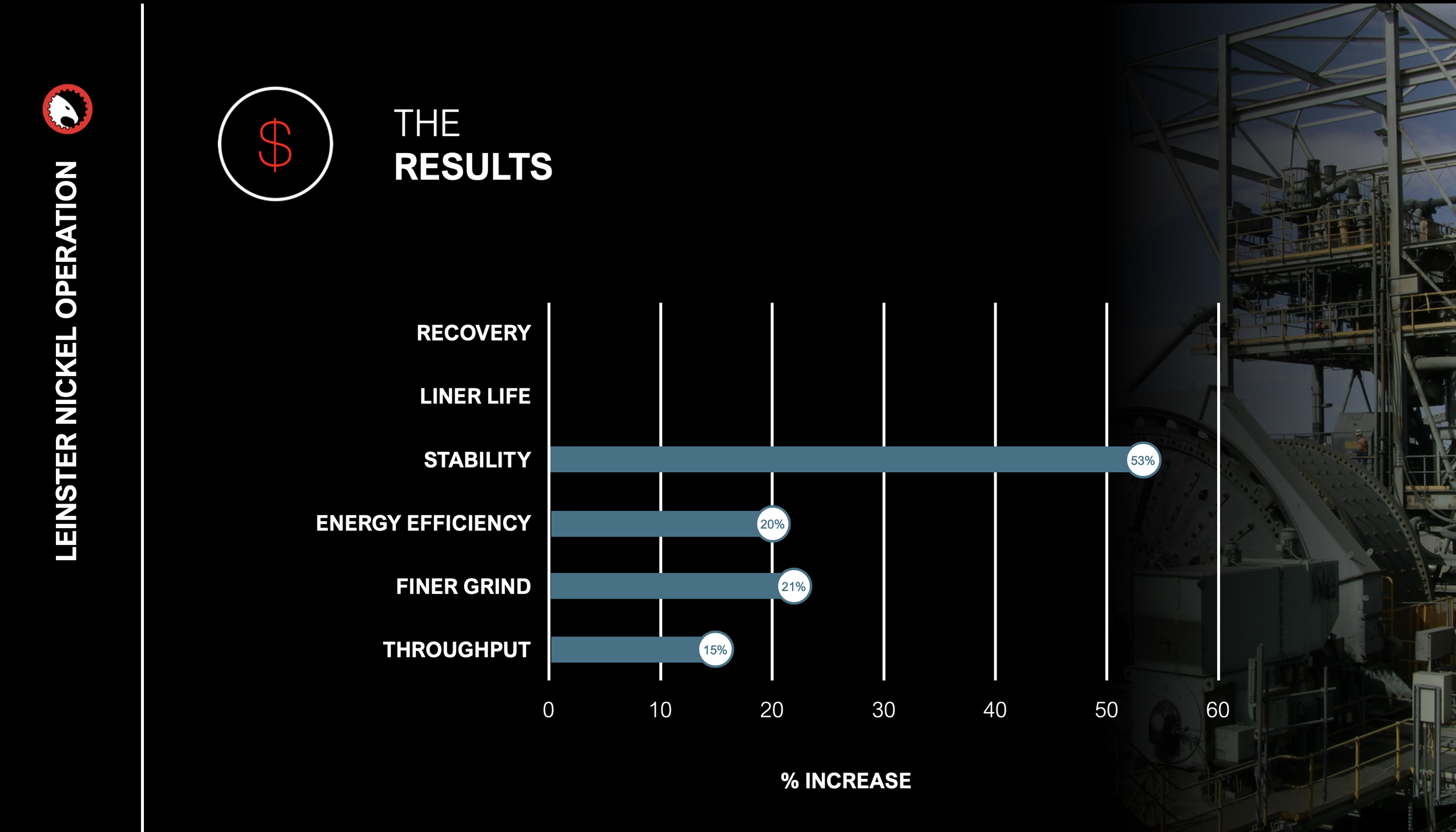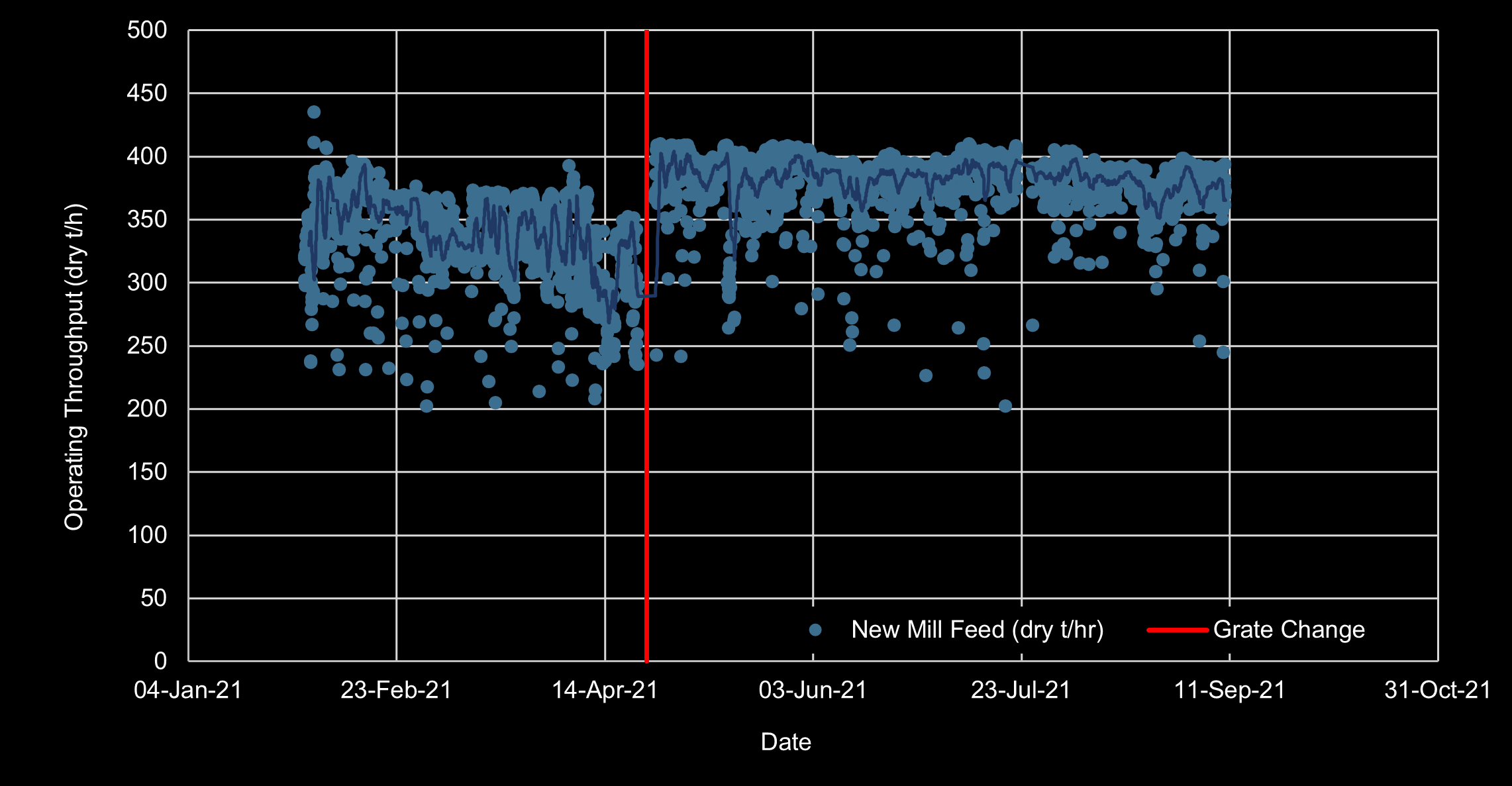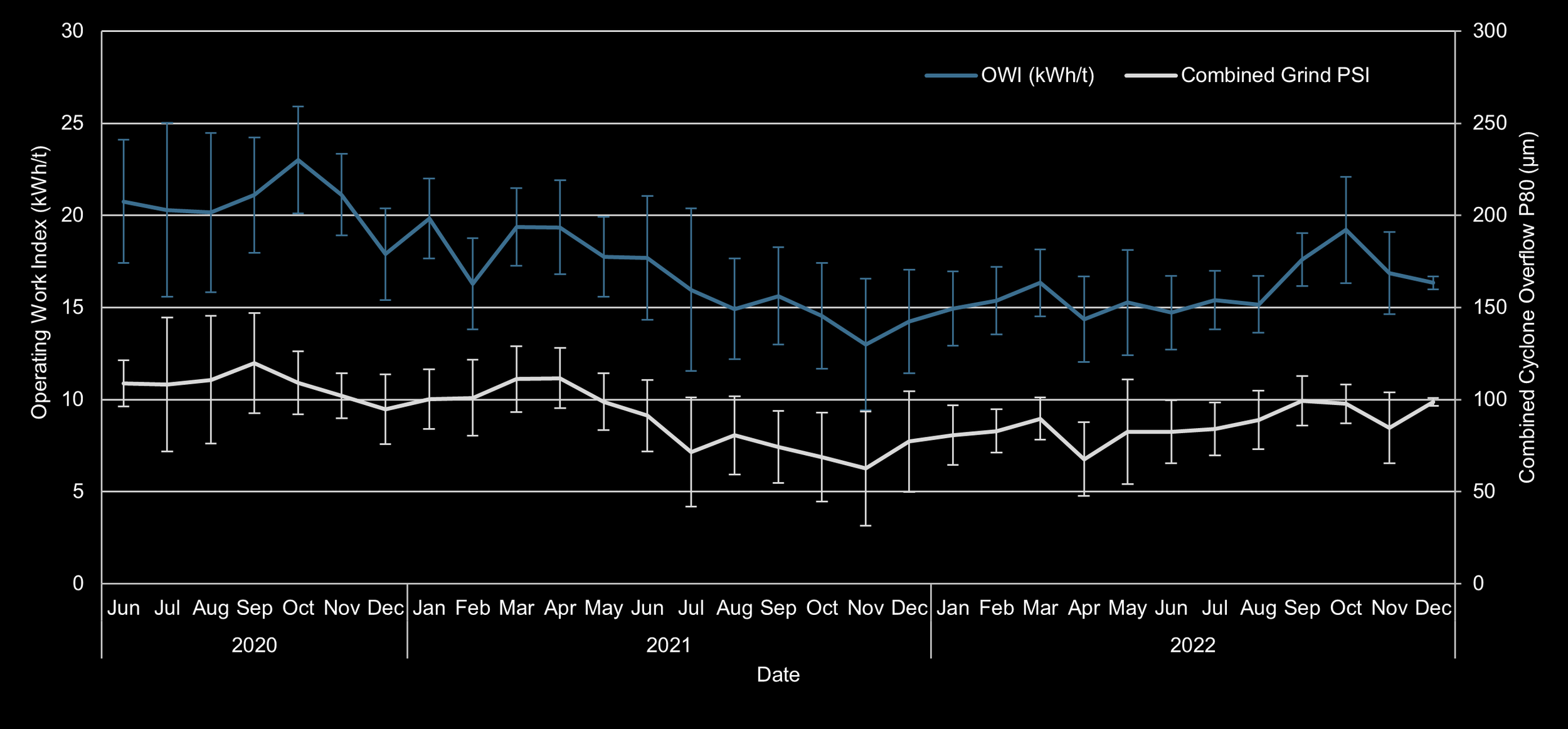
Project: Leinster Nickel Operation
Client: BHP Nickel West
Location: Leinster, Western Australia
Overview
The Leinster Nickel Mine in Western Australia is owned and operated by BHP Nickel West. Ore for the processing plant is sourced from various open pit and underground sources. Nickel is recovered through milling to a target cyclone overflow product P80 size of <120µm, followed by downstream sulphide flotation.
The comminution circuit consists of primary crushing followed by a SAG mill in closed circuit with cyclones. There is no pebble crusher. Flash flotation treats a portion of the cyclone underflow to target recovery of coarse liberating sulphide nickel and reduce downstream losses due to over grinding.
A ball mill is installed alongside the SAG circuit and receives feed from a portion of the flash flotation tails. The ball mill operates in closed circuit with a dedicated cluster of cyclones. The ball mill can, at times, also treat additional recycle streams from the flotation circuit in a regrind capacity.

The Challenge
The circuit was very unstable and required regular grind-outs to bring the mill performance under control. The product size was erratic and achieving below target throughput.
The MillROC Solution
Recommendations were implemented to achieve the throughput target using a continual improvement process with MillROC as its basis. This involved installation of MillROC and a MillSlicer.
MillROC provided a single source of knowledge for identifying constraints, analysing data and quantifying the impact of changes.
An improved process control strategy was implemented, stabilising cyclone pressure and SAG mill weight.
Over-/underthrow and slurry pooling issues were diagnosed with MillSlicer.
Training of operations to understand the theory of operation and the process control philosophy. This was a significant journey to move the mindsets from treating symptoms to treating the root causes.
As a result of the improved stability, the SAG mill grate design was identified as a bottleneck and a solution presented. This involved a change to the SAG mill grate design, using a combination of rubber and Hardox steel segments instead of the original all rubber design. Following this change, grind outs were no longer required, and the process control implementation improved.
Outcome
15% increase in plant throughput while maintaining target grind, exceeding the site throughput target.
20% increase in grinding efficiency.
A finer grind and a 3.1 kWh/t decrease in specific energy consumption.
Stable operation over the life of a set of liners, increasing the SAG mill liner life and benefiting downstream nickel recovery.
See conference paper for more details – SAG 2023
Throughput
Cyclone Pressure
Operating Work Index & Grind




